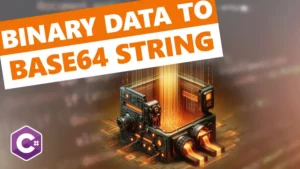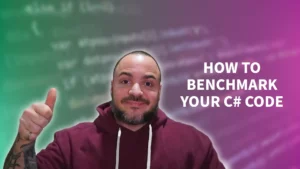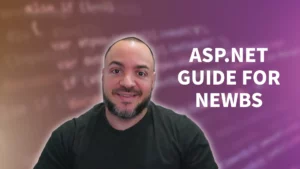Aspiring programmers are often overwhelmed by the options when choosing their first programming language. Choosing the “right” language can be a big factor in staying motivated and enjoying the learning process. That’s why many often ask what are the easiest programming languages to learn. If it’s easy – then it must be the best way to go, right?
In this article, I’ll try to guide you through choosing what are often referred to as some of the “easiest” programming languages to learn. We’ll cover a definition of what an easy programming language is and discuss the benefits and drawbacks of starting with an easy language – strictly based on this factor. We’ll also discuss two of the most popular easy programming languages and I’ll provide tips to get started!
This should help you answer for yourself what are the easiest programming languages to learn. But the easiest may not always imply the best programming languages for beginners to learn! Also an important disclaimer: “easy” is subjective. I’m not here to battle anyone on what they find easier or harder 🙂
Benefits of Learning an Easy Programming Language
Getting started with a programming language strictly because it’s popularized as being easy to learn does have advantages. Firstly, easier programming languages are more accessible, with a lower barrier to entry leading to quicker learning. This can help build confidence and encourage beginners to continue their programming journey.
Furthermore, easy programming languages are often more forgiving of syntax errors, making it easier to spot and correct mistakes. This makes it less frustrating to get started and minimizes errors. If you’re spending less time battling with the syntax, you can spend more time focused on key concepts.
Easy Programming Languages for Beginners
If you’re just starting, you may find it beneficial to start with one of the easiest programming languages to learn. Python and Ruby are great examples of easy programming languages to learn, as they each have a simple syntax. In comparison, a programming language such as C++ may have a steeper learning curve. With ease of learning, Python, and Ruby allow beginners to concentrate on coding concepts and problem-solving instead of getting to know the ins and outs of a complicated language.
When starting with an easy programming language, there are plenty of projects that beginners can create. They can create basic games and design simple applications. Take, for example, a chatbot or a weather application. These projects help beginners understand how basic software programs work, build essential coding skills, and pique interest and creativity.
As you build projects, this may be your first exposure to whether or not the language you picked feels like the right tool for the job. Sometimes we don’t know until we try. But don’t sweat it. Programming principles are extremely transferable across languages!
Two of the Most Easiest Programming Languages to Learn
When it comes to popular easy programming languages, two languages that come to mind for me are Python and JavaScript. Both languages have been around for a while and are easy to use, making them popular choices for beginner programmers.
Python – The Swiss Army Knife of Easy Programming Languages
Python is used everywhere by many different levels of programmers. It’s popular for being easy to read and write, making it accessible to beginners. When people ask “What is the easiest programming language to learn?”, the answer most people provide is Python. Python is considered a beginner-friendly language because it doesn’t require a lot of code to get started, yet it can still be used for complex projects.
Python has an incredible range of applications. It’s used for everything from web development to data analysis. You know all of that AI stuff that’s the latest craze? Yup. For that especially! One of the key benefits of learning Python is that it is a well-documented language, meaning it’s easy to look up functions and find solutions to programming problems.
Some popular projects that can be done with Python include building web applications using frameworks like Django or working with data science libraries like Pandas and NumPy. You can even mix Python with C# if you’re feeling adventurous!
JavaScript – The Go-To Language for Web Development
JavaScript is one of the most popular programming languages in the world. It’s used to build everything from web applications to mobile apps. It’s a great beginner language because it can be run in a web browser and used to make changes to websites. This happens to be one of the most popular areas for beginners to jump into.
JavaScript is also an easy programming language to learn, and it has an active community that provides resources for beginners. One of the reasons for its popularity is its versatility. In addition to its use in web development, JavaScript can also be used to create games, desktop applications, and mobile apps.
Some popular projects that can be done with JavaScript include creating browser-based games, developing web applications using frameworks like React or Angular, and building mobile apps using frameworks like React Native.
Both Python and JavaScript are great options for people interested in learning an easy programming language. They’re easy to learn, versatile, and have a lot of real-world applications.
Drawbacks of Learning an Easy Programming Language – STRICTLY for Being Easy
While learning an easy programming language can have its benefits, there are also potential drawbacks to consider if you pick it just because it’s easy. One of the primary limitations of picking an easy programming language strictly for being easy is that it may not provide the depth and complexity needed for more advanced programming tasks. While easy languages can handle simple projects and tasks, they may not be suitable for scaling or handling more complex projects. Even if they *can*, you may find them to be ill-suited and actually more challenging to make work.
Another potential drawback is that learning an easy language first may keep you stuck in DSA Hell. And what’s that? Data Structures and Algorithms on repeat – learning theory behind things so that you can talk about programming concepts but not actually apply them effectively in an engineering sense. This isn’t the fault of the easy programming language you pick necessarily, but it can be a potential trap if your focus is just to pick whatever is easiest.
It’s important to note that the trap of picking easy for the sake of being easy may limit you initially in your progression and/or career. And no, I’m not claiming you can’t get a job if you pick Python or JavaScript. They’re ridiculously popular so that would be a bold claim! My point is that if you want to go into a particular domain of interest but you’re not willing to learn the languages and frameworks used, you might hit some hurdles. Easy being the only criterion I think is ultimately the trap you may want to reconsider.
Tips for Getting Started with an Easy Programming Language
When beginning your programming journey, it’s important to approach the learning process in a way that keeps you motivated and engaged. Here are some tips for getting started with an easy programming language:
- Start with the basics: Before diving into complex projects, make sure you have a solid understanding of the basics of your chosen language. If you’re interested in a more complex project, figure out how to break it into smaller pieces you can tackle so you can practice the fundamentals.
- Use YouTube and blogs: … I mean, you’re here, aren’t you? This would be a great opportunity for me to remind you to subscribe to my YouTube channel!
- Use online courses: There are plenty of online courses available for free or at a low cost. These resources can provide guidance and structure as you learn a new language. If you’re looking for C# courses I’d recommend Dometrain.
- Subscribe to newsletters for learning materials: Another shameless plug, but if you want general software engineering and/or dotnet advice, then check out Dev Leader Weekly!
- Join a programming community: Joining online forums and groups can help you connect with others who are also learning or experienced in programming. These communities can provide valuable support, advice, and feedback on your projects.
- Practice, practice, practice: Just like any other skill, programming requires consistent practice to improve. Challenge yourself to create small projects or solve problems on a regular basis to keep your skills sharp.
- Stay motivated: Learning a new language can be challenging, but staying motivated is key to success. Set achievable goals for yourself, and celebrate milestones and accomplishments. Everyone learns at a different pace and anyone that has promised you expertise in a time frame that isn’t multiple years is misleading you.
So, Which Are The Easiest Programming Languages to Learn
Choosing an easy programming language to start with can provide numerous benefits! These include minimizing frustration, building a solid foundation in programming concepts, and reducing the learning curve. Popular easy programming languages include Python and JavaScript, which are versatile and widely used in various industries such as web development and data science.
However, picking a programming language strictly based on how “easy” it is might have drawbacks. You could find yourself using the wrong tool for the task at hand! Ultimately, it is important to choose the right language to start with and continuously challenge oneself to learn and grow as a programmer.
If you’re looking to start your programming journey and can’t figure out which language is best aligned – don’t sweat it. Don’t be afraid to take the plunge and start with an easy language. With a wealth of resources and communities available online, there has never been a better time to learn. Fortunately, two “easy” languages that are also widely used are Python and JavaScript.
So whether it’s one of these two or something else, try to choose a language that suits your interests and start exploring the endless possibilities of creating in the digital world. If you do decide to go with C#, then you’re in the right spot!




Hello Nick
Just wanted to let you know your previous article about C# exceptions has an issue. When trying to access its page, a WordPress error comesup.
Woahhh! Thanks so much for the heads up. I’ll dig into this!
Thanks again – I am using a plugin to help make articles more accessible on google. The plugin itself sometimes does a very poor job parsing JSON data and as a result, blows up.